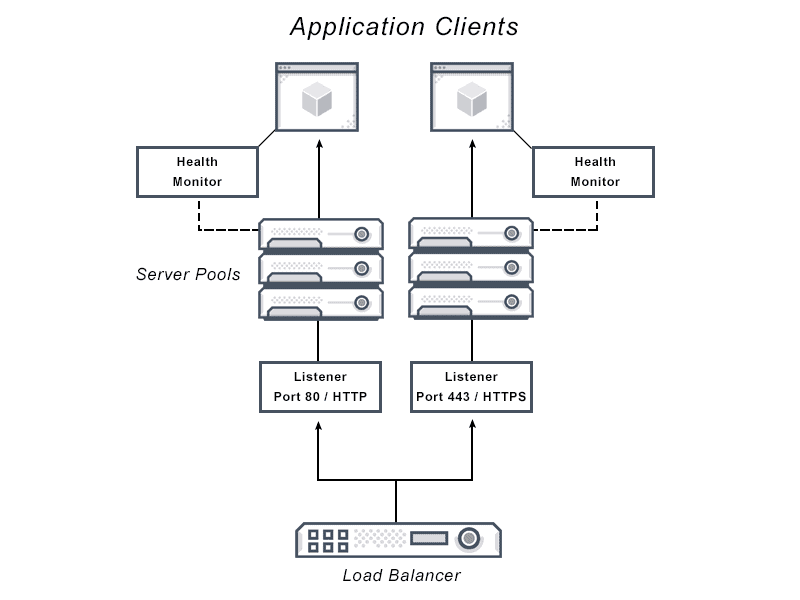Load Balancer as a Service (LBaaS) Definition
Load Balancer as a Service (LBaaS) enables self-service for L4-L7 services for application teams. LBaaS was developed as the networking service for load balancing in OpenStack private cloud environments. LBaaS can be implemented with open source load balancers as well as fully-supported, commercial implementations. The same “as-a-service” approach to load balancing is what multi-cloud load balancers have adopted.

What is Load Balancing as a Service?
Load Balancer as a Service (LBaaS) uses advances in load balancing technology to meet the agility and application traffic demands of organizations implementing private cloud infrastructure. Using an as-a-service model, LBaaS creates a simple model for application teams to spin up load balancers.
Can Load Balancer as a Service be Used in Cloud Computing?
LBaaS can be used in cloud computing in OpenStack private cloud implementations. While Load Balancer as a Service refers to distributing client requests across multiple application servers in OpenStack environments, cloud load balancers follow a similar model as LBaaS. A cloud load balancing service allows you to maximize application performance and reliability. Cloud load balancers lower cost and and can elastically scale up or down to maintain performance as application traffic changes.
How Does Load Balancing as a Service Work?
The LBaaS service in OpenStack is implemented from the LBaaS v2 spec in which the load balancer occupies an OpenStack Neutron port with an IP address assigned from a subnet. Load balancers can listen for requests on multiple ports with each port specified by a Listener. Health monitors associated with pools help to make the system It routes incoming requests from overloaded servers, and then re-routes those requests to servers with highly available by diverting traffic away from pool members that may not be responding properly. Elastic load balancing service refers to the application delivery controller’s ability to scale traffic loads up or down automatically and LBaaS implementations provide on-demand elasticity for load balancing services. LBaaS is commonly used for load balancing web services.
Why Use Load Balancer as a Service?
Load Balancer as a Service (LBaaS) has many benefits:
• Multi-cloud: Consistent application experience across on-premises and cloud environments
• Maximize your Performance: 90% faster application provisioning
• Handles on-demand traffic: provides additional server availability
• Scalability: LBaaS can use cloud scalability to keep costs lower that load balancers hosted by the client business itself.
Who Uses Load Balancers as a Service?
Enterprises moving from a legacy load balancers to Load Balancers as a Service can set new standards for scaling applications and re-routing network port traffic to other servers as well as save on total cost of ownership.
Does VMware NSX Advanced Load Balancer Offer Load Balancers as a Service?
Yes. The VMware NSX Advanced Load Balancer uses software-defined principles to deliver advanced load balancer-as-a-service LBaaS for OpenStack in minutes. Vantage delivers software-defined application services integrated natively with Openstack components to deliver a fully orchestrated, self-service driven OpenStack LBaaS architecture. The VMware NSX Advanced Load Balancer offers central control and visibility through direct integration with the Horizon dashboard. Troubleshooting applications is easy with visual aids and record-and-replay capabilities for traffic events. With VMware NSX Advanced Load Balancer, companies can automate application services while accelerating their OpenStack implementation.
For more on the actual implementation of load balancers, check out our Application Delivery How-To Videos.
For more information on LBaaS see the following resources: